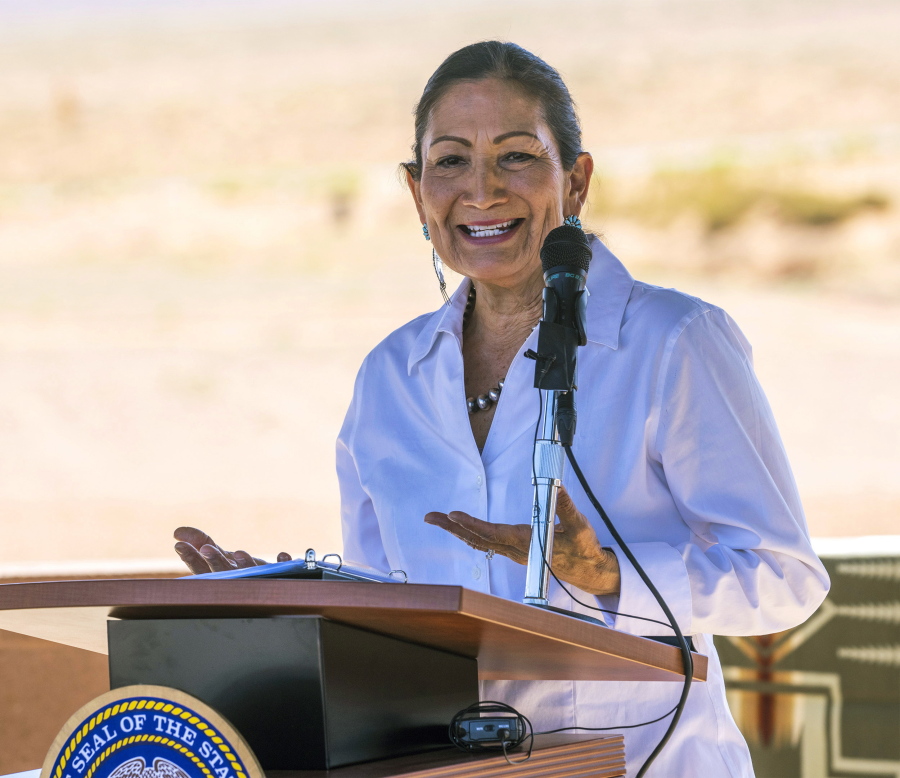Life expectancy for American Indian and Alaska Natives declined over the past two years, and dropped more than other populations in the U.S., according to a recently released national study.
For American Indian and Alaska Native people, life expectancy dropped nearly seven years, from 71.8 to 65.2 years, from 2019 and 2020. That compares to a life expectancy drop of three years during that time period for the overall population.
The last time a similar decrease happened was 1944, a year which saw some of the highest U.S casualty numbers during World War II. The study identified COVID-19 as the main contributing factor in the nationwide decline, with other societal factors also playing into the steep drop in life expectancy among Native Americans.
In 2021, the average life expectancy for non-Hispanic American Indian or Alaska Native women was 69.2. For men, it was 61.5. The overall average life expectancy in the U.S. was 76.1 years.
Abigail Echo-Hawk, director of the Urban Indian Health Institute in Seattle, said the life expectancy numbers were appalling.
“When we look at increases in mortality and decreases in life expectancy, particularly for Native people, we’re seeing the results of ongoing historical colonialism and the impact of longstanding policies that have created health disparities within the Native community,” Echo-Hawk said.
COVID was the main reason for the decline, according to the study. For Native Americans, factors like unintentional injuries, chronic liver disease, suicide and heart disease contributed to the steeper drop.
“If you look at COVID-19, we were more at risk for underlying health conditions such as cardiovascular disease,” Echo-Hawk said. “Those underlying factors put as more at risk for severe complications that would result in hospitalizations and deaths.”
She added that while COVID-19 played a big role in bringing down life expectancy across different demographics in the U.S, the underlying factors already prevalent within Native communities brought the deep drop.
“What we’re seeing is not the impact necessarily of just COVID-19 but COVID-19 exploiting the factors that created a population that was more likely to be impacted by a virus like COVID-19,” Echo-Hawk said. “These increases in mortality can’t be tied to just one specific thing, but more looking at the overall of ongoing results of the underfunding of the Indian Health Service that has not given us good access to resources.”
The Washington State Department of Health also has been tracking COVID by demographic group. Its reports show mortality rates among Native Hawaiians, Pacific Islanders and Native Americans are consistently the highest. These groups also saw disproportionately high hospitalization rates as well as case rates per 100,000 people.
The Yakama Nation reported 61 COVID-related deaths as of December 2021. The Yakima Health District reported 613 COVID-related deaths county wide during the same time period.
Aside from a lack of access to health care, Echo-Hawk said other factors like high homicide rates on reservations due to the jurisdictional misunderstandings and lack of access to quality and culturally appropriate foods which can lead to a rise in diabetes rates and cardiovascular disease, all contribute to the spike in life expectancy seen in the Native community.
Echo-Hawk added that more broadly, these contributing factors can all be attributed to centuries worth of systemic racism.
“When we look at this drop in life expectancy, we have to look at it as a result of structural racism that has perpetuated ongoing health disparities … I see white Americans who are benefitting from structural racism while American Indians and Alaskan Natives are dying from it,” Echo-Hawk said.
Echo-Hawk said the mortality rate for Native Americans is likely an undercount, given the study does not take into account the Hispanic Native population.
The report from the National Center for Health Statistics is based on provisional data. Life expectancy estimates can change with more data and further analysis.



